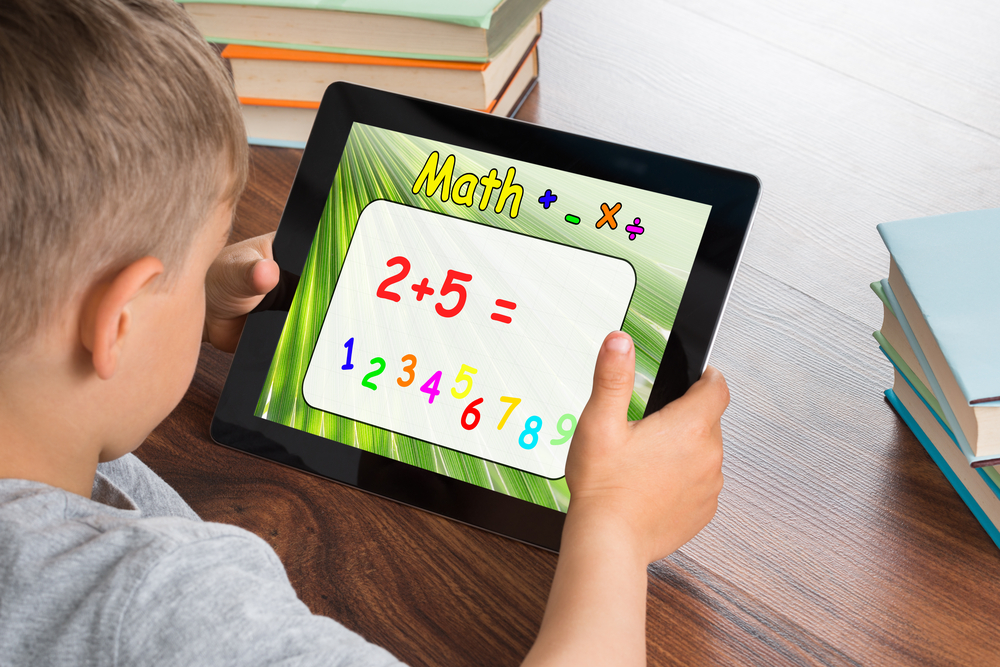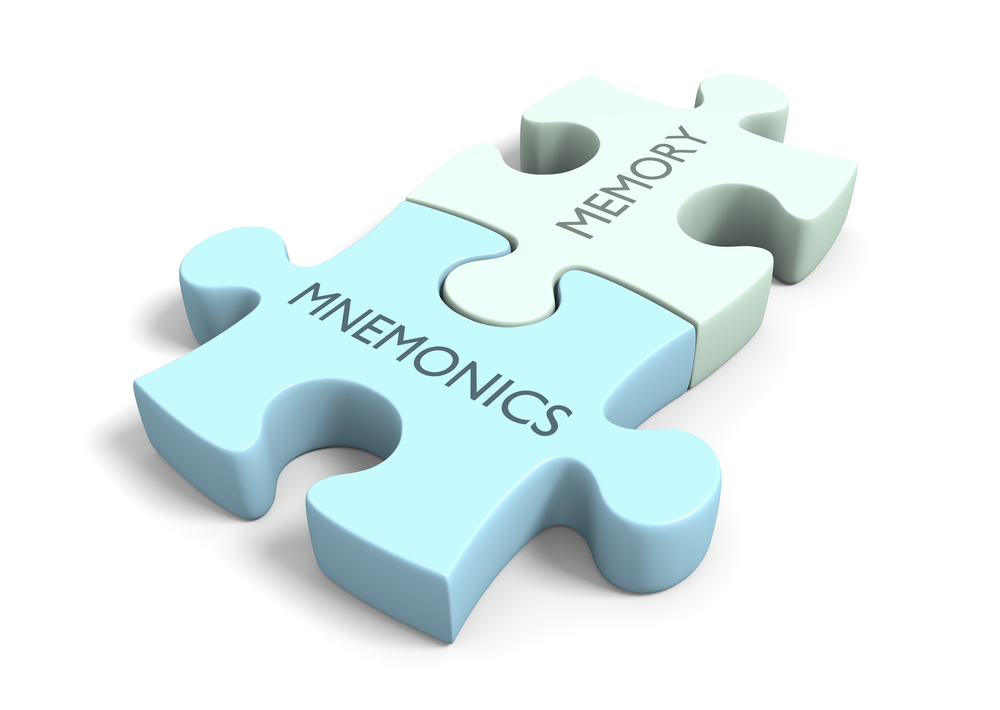Normal Songs and Poems Worksheets Activities With Answers for Ages 3-6
6 filtered results
-
From - To
Discover a delightful collection of "Normal Songs and Poems Worksheets" designed specifically for ages 3-6, perfect for fostering early literacy and creativity! Our engaging activities include charming songs and rhymes that captivate young minds, enhance language skills, and inspire imagination. Each worksheet is paired with easy-to-follow answers, making it seamless for teachers and parents alike to track progress. Whether you're encouraging rhythmic learning, developing vocabulary, or promoting a love for poetry, these resources provide hours of educational fun. Enhance your child's learning experience today with our thoughtfully crafted worksheets, ideal for both classroom use and at-home activities!
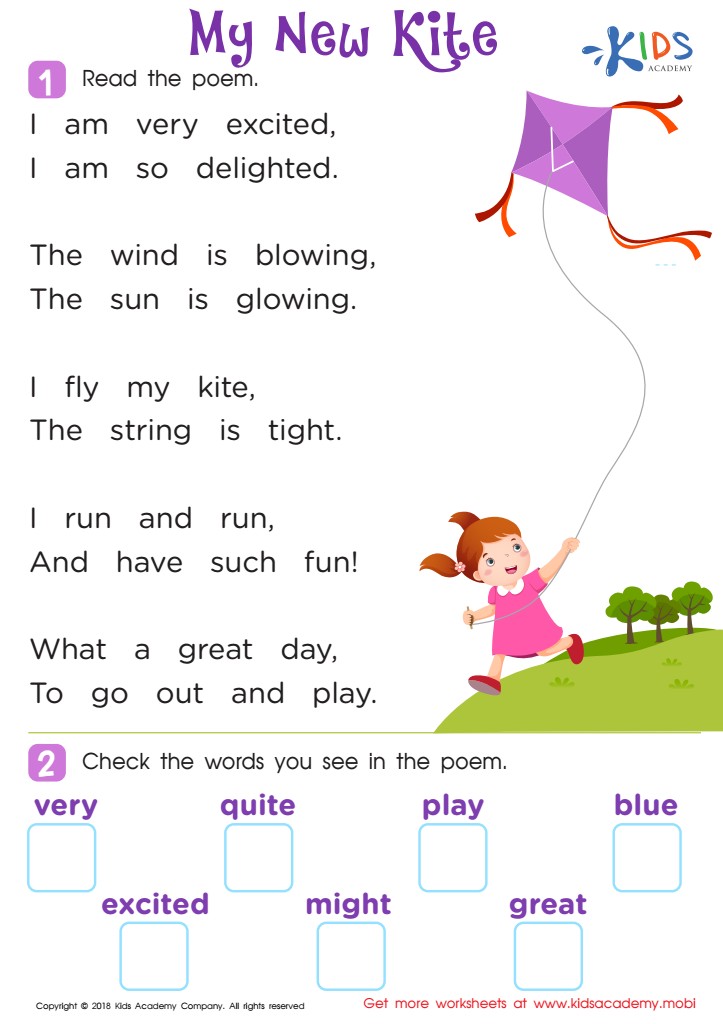

Poem: My New Kite Worksheet
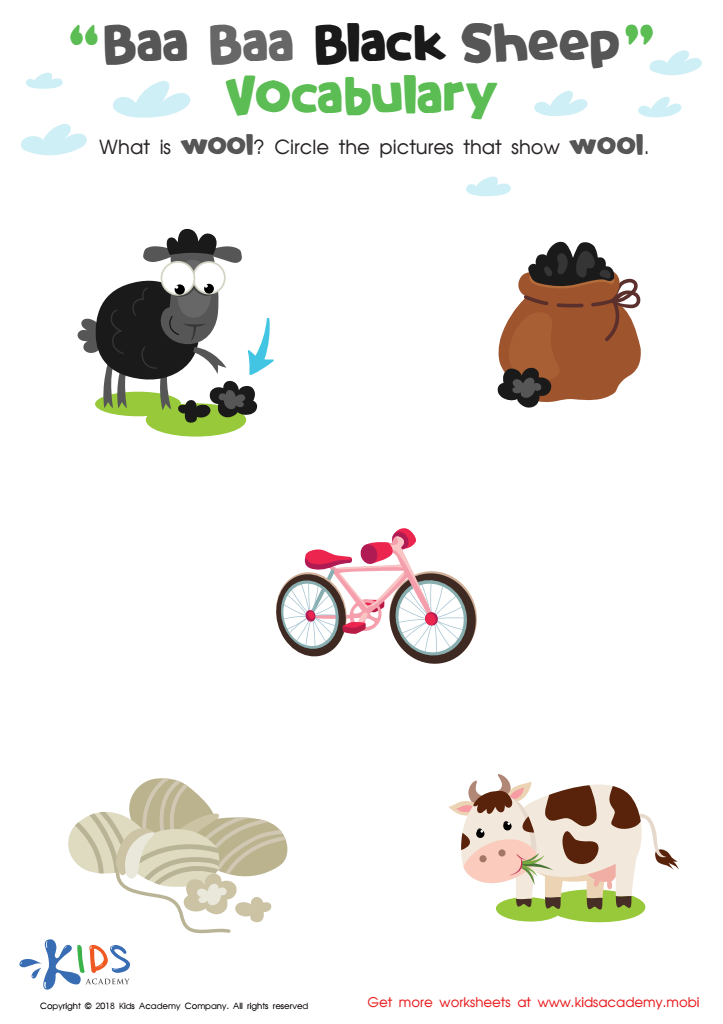

Baa Baa Black Sheep: Vocabulary Worksheet
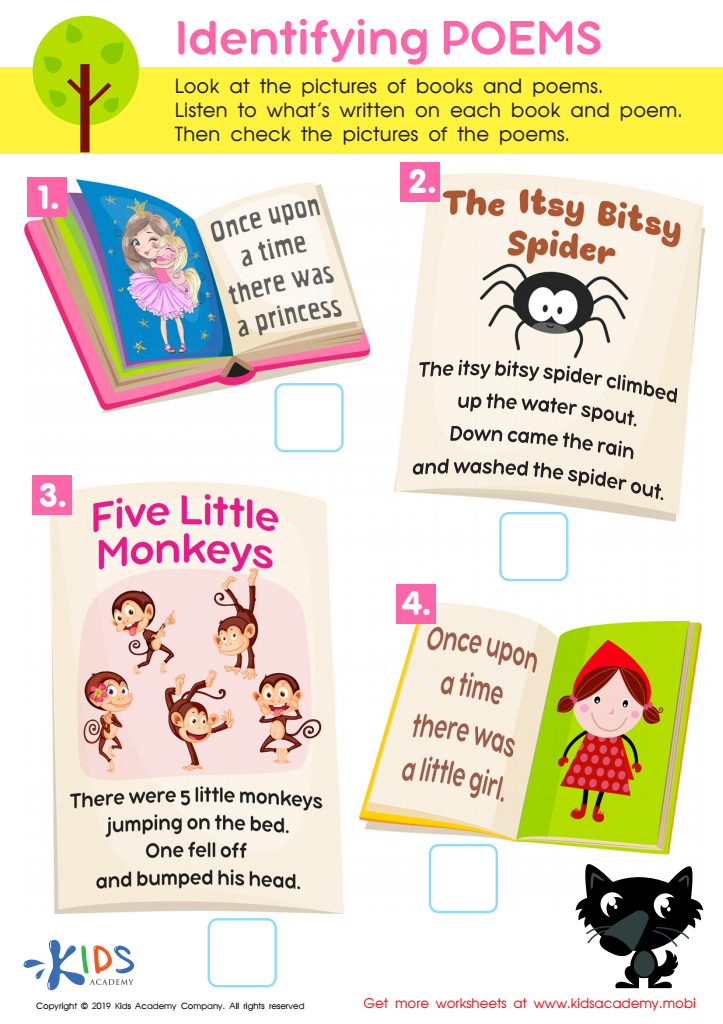

Identifying Poems Worksheet
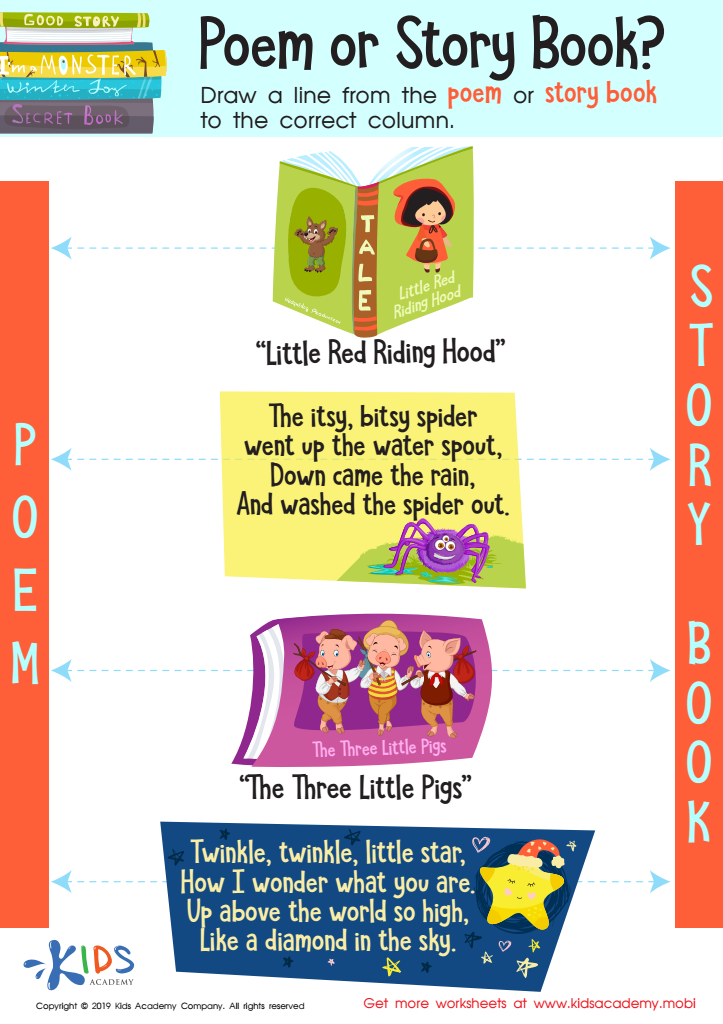

Poem or Story Book? Worksheet
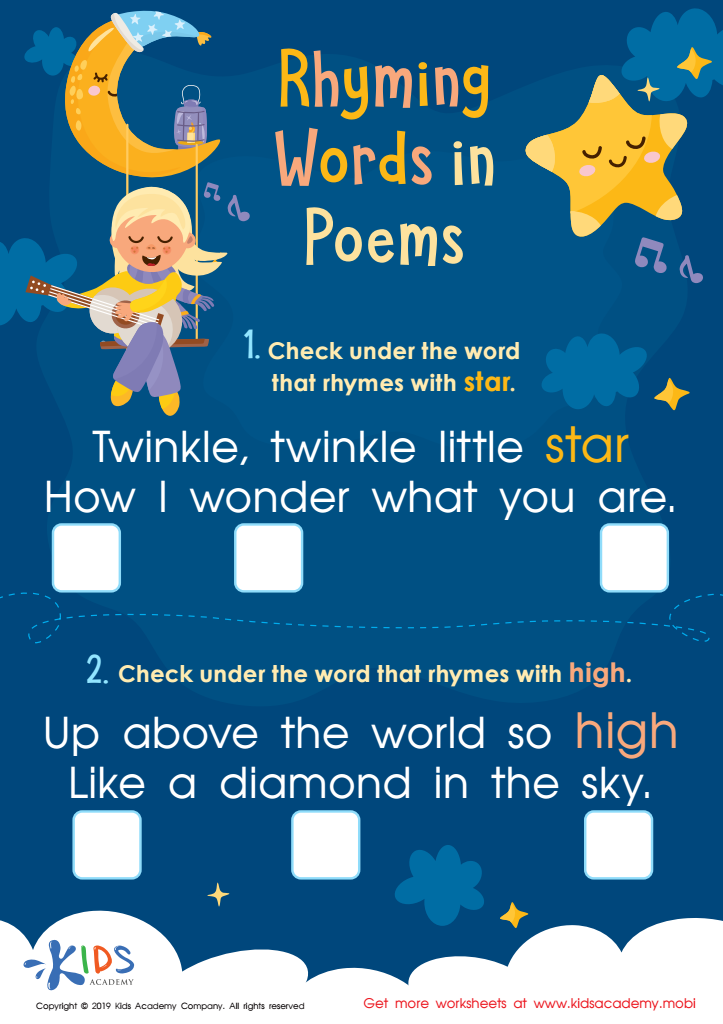

Rhyming Words in Poems Worksheet
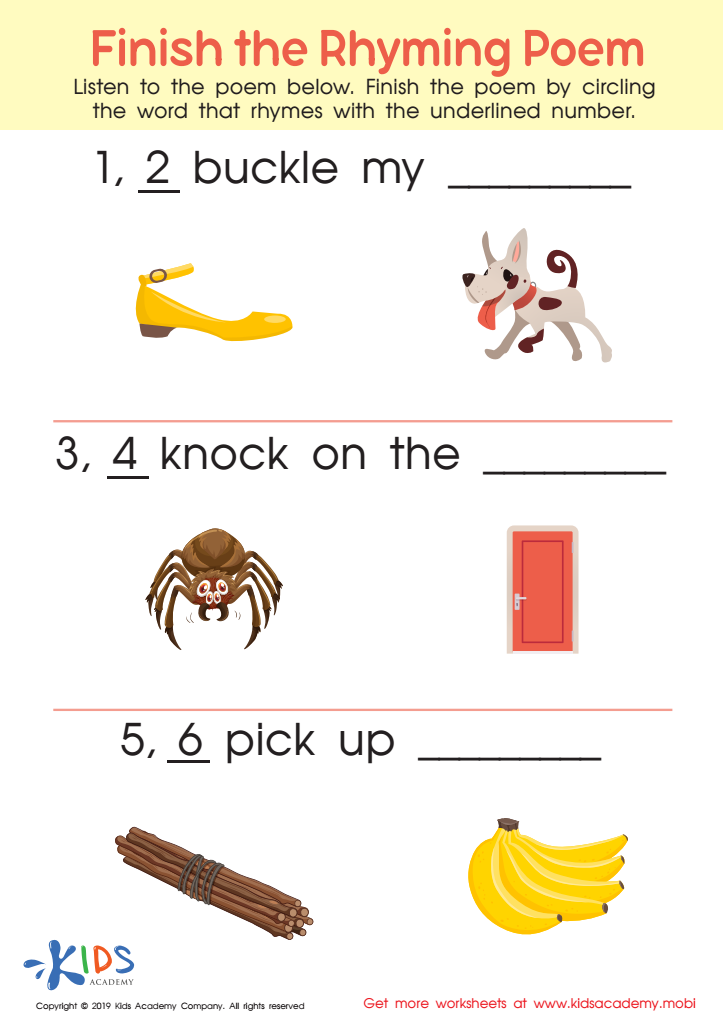

Finish Rhyming Poem Worksheet
Parents and teachers should prioritize Normal Songs and Poems activities for children aged 3-6 because they play a crucial role in early childhood development. At this age, engagement with music and poetry fosters language acquisition and literacy skills, enhancing vocabulary and comprehension. Rhymes and melodic patterns help children understand phonemic awareness, which is foundational for reading readiness.
Moreover, singing songs and reciting poems encourages social interaction and builds emotional intelligence. Through shared activities, children learn to express their feelings and empathize with others, fostering social skills and community building.
Additionally, these activities stimulate creativity and critical thinking. Children experiment with rhythm, rhyme, and storytelling, which enhances their cognitive development. They learn to focus, follow directions, and develop memory skills as they memorize lyrics and verses.
Incorporating songs and poems into learning can also be a practical tool for teaching various subjects, making what might be challenging to understand more accessible and fun. Overall, songs and poems create an engaging and enriching learning atmosphere that promotes holistic development, making them essential tools for nurturing young minds!

 Assign to My Students
Assign to My Students


